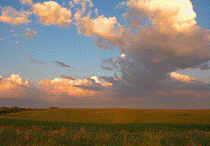
Proceedings of the North American Prairie Conferences
Date of this Version
2004
Document Type
Article
Abstract
We conducted a floristic ordination and gradient analys is of plant communities extending from prairie through graminoid-dominated wetlands in the Chicago region of northeastern Illinois. Data represented about 450 species from 103 stands sampled across a gradient of six soil moisture classes ranging from dry to hydric, and included sand, gravel, dolomite and loam prairies, as well as fen, sedge meadow, floating mat, marsh, and bog. As found in other midwestern grassland studies, vegetation aligned most strongly along a soil moisture gradient, with individualistic species distributions forming a hierarchical continuum, and lower species richness at the dry and wet extremes of the moisture gradient. Most species were infrequent, with about 70% occurring at less than 20% frequency and present in less than five communities. Species that were more frequent within communities were also more widespread among communities, fitting the niche-based model of species distribution. Moreover, less than 20% of all species sampled were significant indicators of soil moisture gradient classes, with most representing mesic and hydric habitats. Dominant prairie grasses extended from dry to wet habitats, merging with wetland species in graminoid fen, calcareous seep and sedge meadow habitats. Hydric habitat, represented by calcareous floating mat, marsh and bog, had fewer dominant prairie species and was dominated by a wetland flora. These results provide compositional and structural models for managing and restoring vegetation across the prairie-wetland vegetation gradient of the Chicago region.


Comments
Published in Dave Egan & John A. Harrington, editors, Proceedings of the 19th North American Prairie Conference: The Conservation Legacy Lives On..., University of Wisconsin-Madison, August 8-12, 2004 (Proceedings of the North American Prairie Conference, 19), Madison, WI: University of Wisconsin-Madison, 2004.